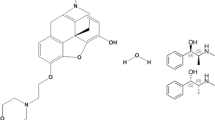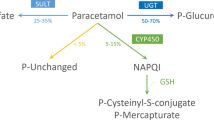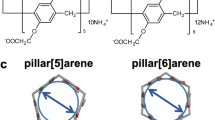Abstract
Cytochrome P450 enzymes (P450s) are heme-thiolate mono-oxygenases involved in the oxidation of many endogenous and exogenous substrates. Herein, we describe two protocols for measuring the activity of a key enzyme of drug metabolism, P450 3A4. In this protocol, the substrate is incubated with human liver microsomes, the reaction is quenched, and the substrates and products are extracted and subjected to liquid chromatography (LC) separation and detection. Oxidation of the calcium-channel blocker nifedipine is measured using UV–Vis spectroscopy in-line with high performance liquid chromatography (HPLC). 6β-Hydroxytestosterone formation from testosterone is measured by HPLC coupled to mass spectrometry (MS). Both of these procedures are rapid, requiring 2 h or less, and can be used to confirm and measure P450 3A4 activity and can also be used as a guide for developing other assays for measuring P450 catalysis. The separation strategy described here is more rapid than many available methods, except when ultra-performance liquid chromatography (UPLC) is used.
This is a preview of subscription content, access via your institution
Access options
Subscribe to this journal
Receive 12 print issues and online access
$259.00 per year
only $21.58 per issue
Buy this article
- Purchase on Springer Link
- Instant access to full article PDF
Prices may be subject to local taxes which are calculated during checkout





Similar content being viewed by others
References
Guengerich, F.P. Common and uncommon cytochrome P450 reactions related to metabolism and chemical toxicity. Chem. Res. Toxicol. 14, 611–650 (2001).
Guengerich, F.P. Cytochrome P450s, drugs, and diseases. Mol. Interventions 3, 8–18 (2003).
Wienkers, L.C. & Heath, T.G. Predicting in vivo drug interactions from in vitro drug discovery data. Nat. Rev. Drug Discov. 4, 825–833 (2005).
Obach, R.S., Zhang, Q.Y., Dunbar, D. & Kaminsky, L.S. Metabolic characterization of the major human small intestinal cytochrome p450s. Drug Metab. Dispos. 29, 347–352 (2001).
Lamba, J.K., Lin, Y.S., Schuetz, E.G. & Thummel, K.E. Genetic contribution to variable human CYP3A-mediated metabolism. Adv. Drug Deliv. Rev. 54, 1271–1294 (2002).
Lin, Y.S. et al. Co-regulation of CYP3A4 and CYP3A5 and contribution to hepatic and intestinal midazolam metabolism. Mol. Pharmacol. 62, 162–172 (2002).
Yano, J.K. et al. The structure of human microsomal cytochrome P450 3A4 determined by X-ray crystallography to 2.05-A resolution. J. Biol. Chem. 279, 38091–38094 (2004).
Ekroos, M. & Sjogren, T. Structural basis for ligand promiscuity in cytochrome P450 3A4. Proc. Natl. Acad. Sci. USA 103, 13682–13687 (2006).
Williams, P.A. et al. Crystal structures of human cytochrome P450 3A4 bound to metyrapone and progesterone. Science 305, 683–686 (2004).
Shou, M. et al. Activation of CYP3A4: evidence for the simultaneous binding of two substrates in a cytochrome P450 active site. Biochemistry 33, 6450–6455 (1994).
Ueng, Y.-F., Kuwabara, T., Chun, Y.-J. & Guengerich, F.P. Cooperativity in oxidations catalyzed by cytochrome P450 3A4. Biochemistry 36, 370–381 (1997).
Korzekwa, K.R. et al. Evaluation of atypical cytochrome P450 kinetics with two-substrate models: evidence that multiple substrates can simultaneously bind to cytochrome P450 active sites. Biochemistry 37, 4137–4147 (1998).
Harlow, G.R. & Halpert, J.R. Analysis of human cytochrome P450 3A4 cooperativity: construction and characterization of a site-directed mutant that displays hyperbolic steroid hydroxylation kinetics. Proc. Natl. Acad. Sci. USA 95, 6636–6641 (1998).
Chen, Y., Monshouwer, M. & Fitch, W.L. Analytical tools and approaches for metabolite identification in early drug discovery. Pharm. Res. 24, 248–257 (2007).
Liesener, A. & Karst, U. Monitoring enzymatic conversions by mass spectrometry: a critical review. Anal. Bioanal. Chem. 382, 1451–1464 (2005).
Guengerich, F.P. et al. Characterization of rat and human liver microsomal cytochrome P-450 forms involved in nifedipine oxidation, a prototype for genetic polymorphism in oxidative drug metabolism. J. Biol. Chem. 261, 5051–5060 (1986).
Guengerich, F.P. & Bartleson, C.J. in Principles and Methods of Toxicology 5th edn. (ed. Hayes, A.W.) 1981–2048 (CRC Press, Boca Raton, FL, 2007).
Krauser, J.A. et al. 1β-Hydroxylation of testosterone by human cytochrome P450 3A4. Eur. J. Biochem. 271, 3962–3969 (2004).
Krauser, J.A. & Guengerich, F.P. Cytochrome P450 3A4-catalyzed testosterone 6β-hydroxylation: stereochemistry, kinetic deuterium isotope effects, and rate-limiting steps. J. Biol. Chem. 280, 19496–19506 (2005).
Wang, D.D. & Zhang, M.L. Rapid quantitation of testosterone hydroxyl metabolites by ultra-performance liquid chromatography and mass spectrometry. J. Chromatogr. B 855, 290–294 (2007).
Arlotto, M.P., Trant, J.M. & Estabrook, R.W. Measurement of steroid hydroxylation reactions by high-performance liquid-chromatography as indicator of P450 identity and function. Methods Enzymol. 206, 454–462 (1991).
Shaw, P.M., Hosea, N.A., Thompson, D.V., Lenius, J.M. & Guengerich, F.P. Reconstitution premixes for assays using purified recombinant human cytochrome P450, NADPH-cytochrome P450 reductase, and cytochrome b 5 . Arch. Biochem. Biophys. 348, 107–115 (1997).
Wang, P.P. et al. Purification and characterization of six cytochrome P-450 isozymes from human liver microsomes. Biochemistry 22, 5375–5383 (1983).
Guengerich, F.P., Martin, M.V., Sohl, C.D. & Cheng, Q. Measurement of cytochrome P450 and NADPH-cytochrome P450 reductase. Nat. Protoc., 4, 1245–1251.
Miyazaki, M. et al. Defective activity of recombinant cytochromes P450 3A4.2 and 3A4.16 in oxidation of midazolam, nifedipine, and testosterone. Drug Metab. Dispos. 36, 2287–2291 (2008).
Acknowledgements
Cytochrome P450 and NADPH–P450 reductase research in this laboratory is supported by the United States Public Health Service grant R37 CA090426. We thank Dr. M. Wade Calcutt for assistance with MS.
Author information
Authors and Affiliations
Contributions
C.D.S. optimized the assays. C.D.S. wrote most of the paper, with the assistance of F.P.G. F.P.G. and Q.C. checked the protocols, and Q.C. helped with some of the mass spectrometry.
Corresponding author
Rights and permissions
About this article
Cite this article
Sohl, C., Cheng, Q. & Guengerich, F. Chromatographic assays of drug oxidation by human cytochrome P450 3A4. Nat Protoc 4, 1252–1257 (2009). https://doi.org/10.1038/nprot.2009.122
Published:
Issue Date:
DOI: https://doi.org/10.1038/nprot.2009.122
This article is cited by
-
Quercetin Simultaneously Inhibited Cytochrome P450 and P-Glycoprotein to Improve the Pharmacokinetics of Osthole in Rat Plasma
Revista Brasileira de Farmacognosia (2023)
-
Generation of metabolites by an automated online metabolism method using human liver microsomes with subsequent identification by LC-MS(n), and metabolism of 11 cathinones
Analytical and Bioanalytical Chemistry (2012)
-
Measurement of cytochrome P450 and NADPH–cytochrome P450 reductase
Nature Protocols (2009)
Comments
By submitting a comment you agree to abide by our Terms and Community Guidelines. If you find something abusive or that does not comply with our terms or guidelines please flag it as inappropriate.



